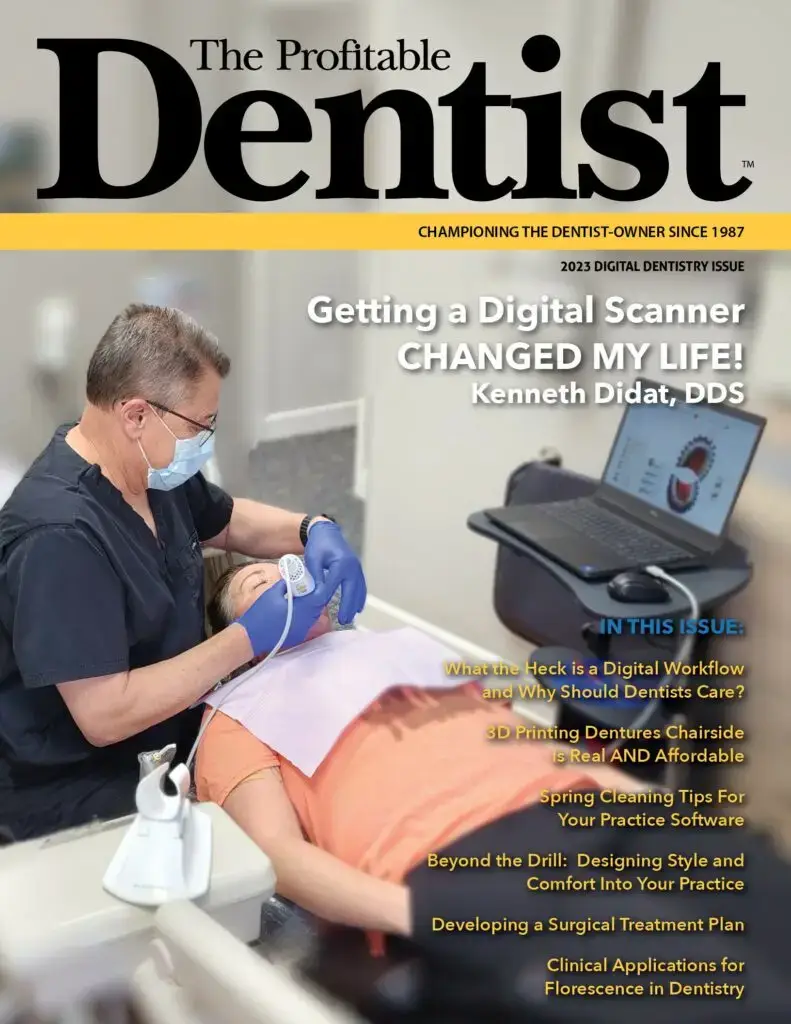8 Solutions for Prioritizing Periodontal Health with Your Patients
Assessing periodontal disease, gauging its progression, educating the patient, and executing the recommended treatment is a challenging undertaking. Constraints arise from limited time of dental hygienists, accuracy in data collection, and effectively communicating the necessity of care to the patient. However, it’s time to acknowledge these challenges and devise solutions. Here’s what you can do…
1. Understand Periodontal Disease
Periodontal disease ranks as the sixth most common disease according to the World Health Organization. It’s a leading cause of tooth loss in the U.S. and plays a role in systemic inflammatory reactions. Despite its impact, its manifestations can be elusive to patients, many of whom connect dental issues with pain – a symptom often absent in periodontal disease.
Action Item:
Don’t just hand your patient a brochure about perio disease. Talk to your patients one on one. Reinforce that periodontal disease has minimal symptoms and that you and your team can determine accurately the status of their periodontal health and take clinical action if necessary.
2. Educate on the Connection with Other Diseases
Recent studies draw parallels between periodontal disease and other inflammatory conditions, such as cardiovascular disease, diabetes, respiratory illness, and even neurological disorders.
Action Item:
Review patients’ medical conditions with them chairside and demonstrate the relationship of their respective condition to periodontal disease and how not controlling the periodontal aspect and aggravate their overall health.
3. Assessment of Periodontal Status
Dental hygienists primarily undertake the crucial task of assessing periodontal health. Methods include periodontal charting, radiographic evaluations, and occasionally, bleeding on probing – all of which can be time-consuming and potentially contain reliability issues.
Action Item:
Invest in calibration training sessions to minimize errors in assessments; and improve the speed of data collection without compromising accuracy (see #5).
4. The Importance of Bleeding on Probing (BOP)
BOP is an integral indicator of inflammation. Monitoring and keeping track of a patient’s BOP number can serve as an instant gauge of their periodontal health.
Action Item:
Introduce a system where dentists routinely ask for the BOP number during appointments. Additionally, consider creating a chart comparing other health numbers like blood pressure and A1C to the BOP number to give context.
5. Embrace Technological Solutions
Technological solutions like voice-activated periodontal charting (e.g., Voice Works) expedite the assessment process. Such innovations can quickly calculate bleeding vs. non-bleeding sites, providing real-time insights.
Action Item:
Incorporate cutting-edge tools like Voice Works in regular dental practice and ensure the team is adequately trained to utilize them.
6. Non-Surgical Treatments – Perio Protect
Perio Protect Perio Tray™ therapy delivers antimicrobials beneath the gingival margin, addressing areas that conventional oral hygiene practices might miss. Consider exploring the benefits, methodology and science behind Perio Protect and learn more about becoming a provider: The Benefits – Perio Protect for Providers
Action Item:
Host a workshop or seminar about Perio Protect and its advantages, ensuring the dental team is equipped to advocate its benefits to patients. You can also personalize this FREE patient letter template to let your patients know you are dedicated to them and their overall health. Note: author of patient letter is Amanda Hill, RDH.
7. The Shift from Cleaning to Health
Rather than merely cleaning teeth, the emphasis should be on overall oral health.
Action Item:
Develop a communication strategy focusing on this paradigm shift. Use testimonials, case studies, or before-and-after photos to illustrate the difference.
8. Communicating Value to Patients
When presenting to patients, highlight the multi-fold benefits of maintaining good periodontal health:
- Preservation of teeth and bone.
- Reduction in inflammation, contributing to overall health.
- Prevention of future complex procedures.
- Enhancement of aesthetic appeal, boosting confidence.
Action Item:
Design a presentation or informational video covering these points, which can be shown to patients during their visits.
To summarize, prioritizing periodontal health isn’t just about preventing dental issues; it’s a comprehensive approach that enhances overall well-being and quality of life. The dental community, armed with information and effective communication strategies, can play a pivotal role in shifting perceptions and ensuring patients receive the best care possible.



